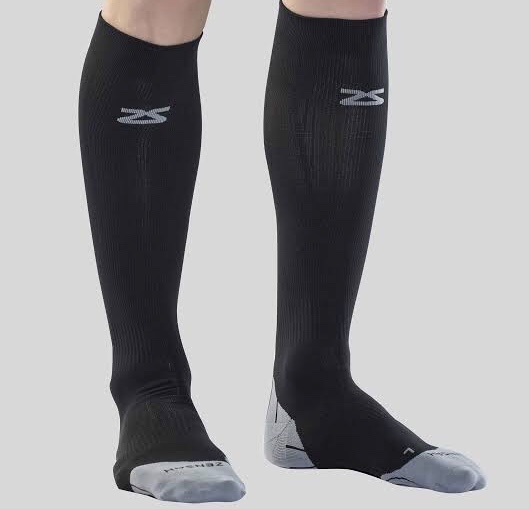Compression socks are the hot cakes in fitness gear. From aircraft crew to cyclists and people with diabetes, compression socks are beneficial for a good reason. Compression therapy is a popular method of treatment and rehabilitation for different injuries and illnesses as it efficiently improves blood circulation.
If you are unfamiliar with compression therapy, here is a crash course on compression socks for men and women and how these gears can support your needs.
What Are Compression Socks?
Compression socks are different from the regular socks that you can grab from the department store. Instead, compression socks are designed to be tight around the ankle area and become less constrictive as it moves toward the knees. These socks for men and women are primarily known to enhance blood circulation throughout the limbs. But how does it work?
Because of gravity, the veins in our legs and feet have to work overtime to sustain blood flow back to the heart. Poor blood circulation and other health conditions cause blood to collect, causing inflammation of your feet and legs, discomfort, and pain.
Compression socks help manage that concern by tightening the foot and leg muscles enough to increase blood supply to the heart and minimize swelling of tissues. As convenient and useful as they are, one can use these socks in virtually any scenario.
Here are some reasons why you need a pair:
Manage Medical Conditions
Some health problems may cause inflammation or stiffness in the feet or legs. Blood flow concerns cause issues in circulation, and some are more vulnerable to inflammation in general.
When you are struggling with issues such as Chronic Venous Insufficiency (CVI), the strain these socks exert on your ankles and legs constrict surface veins and arteries. It allows valves to perform better, enabling blood to flow back to the heart without interruption.
For people at risk of developing leg ulcers, compression socks can minimize the amount of swelling. It can also reduce the likelihood of clotting, avoiding more severe health problems.
Running Accessory
Perhaps you have walked the streets and seen cyclists sporting vibrantly colorful knee-high socks. As trendy as these socks might seem, these athletes are not starting a new fashion style. Instead, sports enthusiasts have learned that sporting compression socks could help during physical activities.
Throughout workouts, these socks offer extra support and help ease the accumulation of lactate in the legs. After competitions, compression socks help distribute the blood, minimize cramps, and enable athletes to recover more quickly.
Post-Surgery Rehabilitation
Following surgery, doctors often prescribe these socks as rehabilitation aids. Although other surgical procedures are quick and straightforward, some operations need you off your feet for an extended period.
Doctors encourage the use of these socks to patients who cannot walk or freely move for weeks following the surgery. It helps maintain blood circulation to their legs, reducing the risk of clotting.
For Frequent Flyers
You might not realize it, but lying and sitting for long periods without stretching your legs can cause blood clots and damage the health of your lower limbs. To aircraft crew and people who have to fly regularly, compression socks ensure that their muscles are not stressed from sitting in an airplane for many hours.
Overall Comfort
It does not matter if you are not an athlete or a flight attendant, and you do not have any health conditions or recent surgical procedures. The beautiful thing with compression socks is that the regular person could use them.
When you have been standing all day, and your muscles are exhausted and stressed out, compression socks can help you recover from tiredness.
When you have a health condition, consult your doctor regarding the benefits of compression socks and what type of compression socks will help you. If you want to try them for a trip, a job requiring a lot of sitting, or other non-medical reasons, explore to see what is convenient for you. Start with low compression types.




You must be logged in to post a comment Login